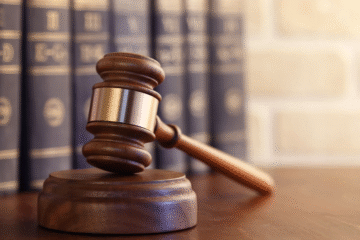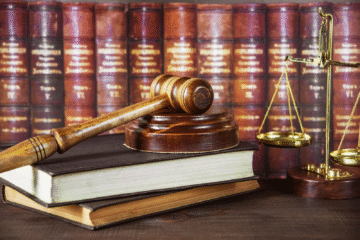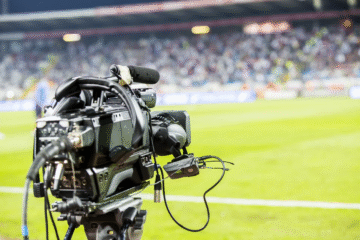
This Article is written by Simran Goel of Asian Law College, Noida, an intern under Legal Vidhiya.
Abstract
The Sports Authority of India (SAI)[1], established in 1984, is the main national body dedicated to the advancement of sports in India. This article looks closely at the wide-ranging powers and complex legal role of SAI in building a strong sports environment. It covers everything from promoting sports at the grassroots level and finding talent to training elite athletes and developing infrastructure. The article explores SAI’s legal foundations and its duties in applying national sports policies, managing sports facilities, and working with National Sports Federations (NSFs). It also examines the legal effects of SAI’s actions, especially regarding athlete rights, anti-doping measures, and governance in Indian sports. A key focus will be on how Indian courts, through important rulings, have influenced and clarified SAI’s authority. These courts frequently intervene to promote fairness, transparency, and responsibility in the administration of sports. Ultimately, the article argues that while SAI has great potential to fulfill India’s sports dreams, its success depends on clear legal guidelines, strong oversight, and a commitment to policies that prioritize athletes.
Keywords
Sports Authority of India (SAI), sports development, India, powers, legal role, national sports policy, athlete welfare, anti-doping, sports governance, National Sports Federations (NSFs), Indian judiciary, landmark judgments, sports infrastructure, talent identification, accountability, autonomy.
Introduction
Sports are much more than just recreation; they are a powerful force for national development. They improve public health, promote discipline, and boost a nation’s standing in the world. Understanding this significant effect and motivated by the need to develop sports talent and manage large facilities, the Sports Authority of India (SAI) was created in 1984. Its main goal has always been to promote and develop sports throughout India. SAI was particularly influenced by the need to make good use of the modern sports facilities that were built for the IX Asian Games in Delhi in 1982. This ensured that these facilities would continue to benefit future athletes and the entire sports community.
As the top organization for sports development in India, SAI has substantial power and a key legal role in shaping national sports policy, developing infrastructure, and looking after athlete well-being. However, the wide scope of its mandate and the public interest it serves mean that its effectiveness, governance, and legitimacy face ongoing challenges from judicial review and changes in sports governance. This article will explore SAI’s legal foundation, look at its various powers and functions, examine important cases of judicial intervention that have influenced its work, and discuss the current challenges and future paths for this crucial organization in Indian sports.
Evolution and Statutory Foundation of SAI
A The Sports Authority of India (SAI) was established during a significant period in the history of Indian Sports: the IX Asian Games held in Delhi in 1982. After the Games ended successfully, the impressive sports facilities, including stadiums, training centers, and accommodations, became a major national asset that needed careful management. To make sure these facilities were used effectively and continued to develop for training elite athletes and promoting sports, the Sports Authority of India was formed.
SAI is not a statutory entity created by parliamentary legislation: instead, it is registered as a society under the Societies Registration Act of 1860. This status affects its independence and accountability compared to a statutory body. While it provides some operational freedom, SAI’s powers and functions come from its Memorandum of Association and Rules and Regulations.
These documents detail its objectives, organizational framework, and operations. This foundational document determines its authority, instead of a specific parliamentary act.
SAI functions as an independent body under the Ministry of Youth Affairs and Sports (MYAS)[2] of the Government of India. This connection shapes its reporting structure, with MYAS offering overall policy guidance and budget funding. SAI mostly gets its finances from the central government, using these funds for various sports development programs, athlete training, and maintaining infrastructure. While its primary mission has remained consistent over the years, SAI has undergone internal transformations and updates in policy, adapting to evolving national sports objectives and striving to enhance its contribution to promoting sports excellence throughout the nation.
Powers and Functions of the Sports Authority of India
The Sports Authority of India (SAI) possesses a diverse array of powers and responsibilities. It acts as the main government agency for promoting sports and excellence in India. Its duties go from nurturing talent at the grassroots level to supporting high-performance training for elite athletes, helping to fulfill the nation’s sporting goals.
One of SAI’s main roles is in managing and developing sports infrastructure. It manages, operates, and maintains a large number of sports facilities across the country. This includes major stadiums, regional centers, and specialized training complexes. In addition to maintaining these facilities, SAI also plans, builds, and updates new infrastructure, creating top-notch environments for athletes. A key part of this is making sure that these facilities are accessible not only to elite athletes but also to emerging talent and, when suitable, to the general public who want to engage in sports.
SAI is committed to finding and developing talent, which is crucial for India’s sporting future. It runs several programs designed to discover and support potential athletes. The SAI Training Centres (STCs) offer structured coaching and encouragement to young athletes with promise. The Special Area Games (SAG) schemes focus on discovering talent from remote, rural, and tribal areas, using traditional sports and physical skills to integrate diverse talents into the mainstream. SAI also promotes grassroots sports, school sports programs, and extensive youth initiatives, recognizing them as the foundation of a strong sports system.
Once talent is identified, athletes move into training and high-performance programs. SAI leads elite athlete development through intense national coaching camps, offering complete support that includes expert coaching, advanced sports science assistance (physiology, psychology, and biomechanics), customized nutrition plans, and top medical facilities. This comprehensive approach aims to enhance athlete performance and ensure they are fully prepared for national and international competitions, including prestigious events like the Olympic Games and Asian Games.
SAI plays a vital role in enhancing and nurturing human resources through coaching. It trains and certifies sports coaches mainly through the Netaji Subhas National Institute of Sports (NSNIS) in Patiala, which is recognized as SAI’s academic branch. NSNIS offers various diploma and certificate courses to ensure a steady supply of qualified coaches. Beyond coaching, SAI works on building capacity for sports administrators, understanding that effective management is essential for sports growth.
As the government’s operational arm, SAI is the main agency for implementing the National Sports Policy. It turns the policy directives and strategic visions of the Ministry of Youth Affairs and Sports into practical programs. Also, the financial management is another important power SAI holds, involving the allocation of substantial government funds for sports development. It ensures the accountability for how public funds are used is crucial and is subject to governmental audits and public scrutiny.
Finally, SAI strengthens Indian sports through research and documentation. It promotes research in sports science to improve training methods and athlete performance. Additionally, it collects data on athlete performance, keeps detailed records, and compiles statistics across sports disciplines, providing insights for future planning and policy development.
These varied powers and functions highlight SAI’s essential role in building a vibrant sports culture and improving India’s position in the global sports arena.
Legal Role and Responsibilities of SAI
Functioning as the operational branch of the Ministry of Youth Affairs and Sports (MYAS), the Sports Authority of India (SAI) plays a crucial legal role and carries responsibilities that shape its activities and relationships within the Indian sports framework.
A key part of SAI’s legal duty is ensuring compliance with the National Sports Development Code of India, 2011. While the National Sports Federations (NSFs) primarily follow this code, SAI, as the central government’s implementing agency, oversees this process. It makes sure that NSFs and other sports bodies receiving government support comply with the Code’s rules on good governance, transparency, democratic elections, age and tenure limits for office holders, and fair selection methods. If these bodies do not comply, they risk losing recognition and financial support, which can affect their ability to operate effectively.
Additionally, a significant aspect of SAI’s duties involves ensuring the well-being and rights of athletes. SAI must protect the rights of athletes under its care, ensuring fair and transparent selection processes for national camps and teams. It also establishes strong grievance redressal systems. SAI is responsible for providing safe, harassment-free training environments and promoting gender equality, while also working actively to prevent sexual harassment in sports. Beyond supporting active athletes, SAI is increasingly focused on helping retired athletes, acknowledging their contributions and ensuring their well-being after sports.
For major disputes, formal legal mechanisms like the Court of Arbitration for Sport (CAS) or specialized arbitration bodies exist, but SAI often plays an informal yet vital role in resolving disputes within sports bodies or between athletes and federations it oversees. As a government entity, it can mediate discussions to resolve conflicts before they escalate into formal legal issues, even though it lacks formal judicial powers.
Finally, as an autonomous body that receives substantial public funding, SAI must maintain strong public accountability. It answers to Parliament through the Ministry of Youth Affairs and Sports, with its operations and financial usage often reviewed during parliamentary sessions and standing committee discussions. SAI is also subject to the Right to Information (RTI) Act, 2005, which mandates transparency and requires it to provide information to citizens. Its financial accounts undergo regular audits by the Comptroller and Auditor General of India (CAG), ensuring proper use of public funds and adherence to financial rules.
These legal roles and responsibilities highlight SAI’s complex position as a major player in governing and developing Indian sports, consistently navigating legal frameworks and public expectations.
Indian Landmark Judgments and Judicial Scrutiny of SAI
The Indian legal framework has increasingly taken an active role in overseeing sports. This involvement is based on a strong commitment to fairness, transparency, and natural justice, especially when athletes’ fundamental rights and the public interest are at risk. This judicial activism has changed how bodies like the Sports Authority of India (SAI) and various National Sports Federations (NSFs) operate.
One major area of judicial involvement has been selection disputes. Courts often hear cases from athletes claiming unfair practices in the selection processes for national teams or training camps. While judges usually respect the expertise of selection committees, they step in when there is clear rule-breaking, evidence of discrimination, lack of transparency in trials, or the use of arbitrary criteria. Many High Court cases, which often involve specific athletes and sports like wrestling, shooting, or track and field, show the judiciary’s commitment to ensuring that selections are based on merit and fairness.
Governance of NSFs and adherence to the National Sports Code is another important area of intervention. This has been led by Public Interest Litigations (PILs) filed by advocate Rahul Mehra against the Union of India and others in the Delhi High Court and later in the Supreme Court[3]. These cases highlight the non-compliance of NSFs with the National Sports Development Code of India, 2011. Key issues include age and tenure limits for office holders, democratic elections, and financial transparency. The judiciary frequently instructs the Ministry of Youth Affairs and Sports (MYAS) and SAI to adhere closely to the Sports Code. Specific orders have stressed SAI’s duty to enforce compliance, warning that non-compliant federations could face derecognition and funding cuts. These rulings have forced the executive branch to enforce its own policies, holding SAI accountable for its oversight.
In anti-doping cases[4], while the National Anti-Doping Agency (NADA) takes the lead in hearings, courts still have the authority of judicial review. Athletes challenging doping bans often claim unfair procedures, violations of natural justice, or problems with the testing process. Although these issues do not directly involve SAI’s main functions, SAI’s role in promoting anti-doping awareness and facilitating testing links it closely to NADA’s work. Any systemic problems in enforcing anti-doping rules can reflect on SAI’s broader responsibilities.
The effects of these court decisions have been significant. They have increased transparency and accountability within SAI and NSFs, forcing them to follow governance standards. This, at times, has created tension between judicial oversight and the perceived independence of sports bodies. However, courts have repeatedly stated that this independence cannot overcome public interest, fairness, or fundamental rights. This assertive approach by the judiciary has effectively overseen administrative inaction and opacity, prompting the government to oversee sports with responsibility and integrity.
Challenges and Future Directions for SAI
Despite its critical role, the Sports Authority of India (SAI) faces several challenges. One major issue is bureaucratic efficiency. Decision-making can often be slow, which affects how quickly important athlete support and infrastructure projects can be implemented. There is a constant need for more professionalization within SAI, moving towards a more specialized approach in sports management and reducing administrative interference.
Funding and resource allocation are other ongoing challenges. Although SAI receives significant government funding, it is crucial to ensure that these funds are used effectively and to address any existing resource gaps. Future sustainability may also depend on attracting responsible private investment while protecting the public interest and preventing commercial exploitation.
The complex relationship between SAI, the Ministry of Youth Affairs and Sports (MYAS), and the National Sports Federations (NSFs) tests the balance between independence and accountability. Finding the right balance is essential, allowing NSFs to operate independently while remaining accountable to SAI and MYAS for governance and financial practices. Clear authority and responsibility are necessary to avoid confusion and improve coordination.
Going forward, a focus on athletes should be at the heart of SAI’s activities. This means actively including athletes in policy-making and prioritizing their well-being—both physical and mental—over merely focusing on medal counts. Learning from global best practices in sports administration and adopting modern sports science and technology is crucial for India to improve its competitiveness on the international stage.
Finally, the long-discussed need for legal reforms, particularly a National Sports Law, represents an important future direction. Such a law could clearly define SAI’s powers and responsibilities, provide stronger legal support for its functions, and potentially simplify the governance of Indian sports by addressing many current uncertainties that require judicial intervention.
Conclusion
The Sports Authority of India is a key part of India’s sports landscape. It has the power to shape national sports policy, develop facilities, and support athletes. The ongoing interaction between its broad responsibilities and the oversight of the Indian judiciary highlights its legal duties. This encompasses guaranteeing fairness, transparency, and effective governance.
SAI manages extensive sports infrastructure and finds talent through programs like STC and SAG. It also helps elite athletes perform, trains coaches, and carries out national sports policies. Its responsibilities include following the National Sports Code, protecting athlete welfare, enforcing anti-doping rules, and being accountable to the public. These legal duties are often tested by important court rulings, which push for more transparency and hold both SAI and National Sports Federations responsible.
In the future, SAI’s contribution to realizing India’s sports objectives is evident. To fulfill its vision, it needs to keep evolving. This means improving bureaucratic efficiency, using resources wisely, and balancing independence with accountability. A strong focus on athlete welfare is essential. This includes listening to their voices and adopting global best practices in sports science and management. Ultimately, the long-awaited National Sports Law could solidify SAI’s role and further improve governance. Only through these efforts can India create a strong, ethical, and athlete-focused sports environment, meeting its goals on the global stage.
References
1. Sports Authority of India, https://sportsauthorityofindia.nic.in/ (last visited July 8, 2025)
2. Press Information Bureau, https://www.pib.gov.in/PressReleasePage.aspx?PRID=1557440 (last visited July 8, 2025)
3. Sports Authority of India, GUIDELINES, — SAI Publication
4. Ministry of Youth Affairs and Sports, https://yas.nic.in/ (last visited July 8, 2025)
5. Sports Authority of India, https://share.google/F4Qq1irWokx4C5GdN (last visited July 8, 2025)
6. SAI, https://share.google/3fQ3c37IGGLedtm7t (last visited July 8, 2025).
7. The Amikus Qriae, Anti-Doping Laws and Regulations in India, — The Amikus Qriae Blog, (2022)
8. Legal Bites, https://www.legalbites.in/sports-law/judicial-review-in-sports-governance-978193 (last visited July 8, 2025)
9. LawBhoomi, https://lawbhoomi.com/legal-rights-and-duties-of-sportspersons-in-india (last visited July 8, 2025)
[1] Sports Authority of India, https://sportsauthorityofindia.nic.in/ (last visited July 8, 2025)
[2] Ministry of Youth Affairs and Sports, https://yas.nic.in/ (last visited July 8, 2025)
[3] Rahul Mehra v. Union of India, AIR 2022 Del 156
[4] Sports Disputes in India: The Role of Courts in Selecting National Teams, (August 2022)
Disclaimer: The materials provided herein are intended solely for informational purposes. Accessing or using the site or the materials does not establish an attorney-client relationship. The information presented on this site is not to be construed as legal or professional advice, and it should not be relied upon for such purposes or used as a substitute for advice from a licensed attorney in your state. Additionally, the viewpoint presented by the author is personal.




0 Comments